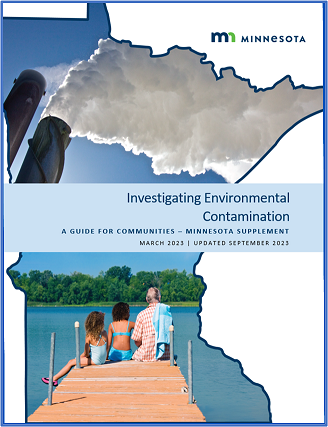Hazardous Sites & Substances
- Hazardous Sites & Substances
- Hazardous Waste Sites
- Topics
- Choose Safe Places Minnesota
- Environmental Exposures Grand Rounds
- Exposure and Health Investigations
- Contact us
Related Topics
- Water Contaminants and Your Health
- Cancer and the Environment
- Fish Consumption Guidance
- Children's Environmental Health
- Air Quality by Topic
- MN Public Health Data Access Portal
Environmental Health Division
Contact Info
Investigating Environmental Contamination: Minnesota Supplement

Minnesota Department of Health (MDH) created the Investigating Environmental Contamination: Minnesota Supplement (PDF) to provide local sources of information and data, and to empower Minnesotans to learn about their environment and health by understanding outdoor pollution in the air, soil, and water. The guide is for community members who are concerned about environmental exposures in their neighborhoods. The information and resources are intended to help community members take steps to figure out if contamination is affecting the health of members of their community.
The Minnesota Supplement is not intended to be a stand-alone document and is most helpful when used in tandem with the original guide - Investigating Environmental Contamination: A Guide for Communities (Guide)(PDF). The original guide was written by the Great Lakes Center for Children’s Environmental Health at the University of Illinois at Chicago, School of Public Health.
Investigating Environmental Contamination: Learning Module
This module will help you to understand how the resources in the Minnesota Supplement could be used by walking through several examples of issues you may encounter.
How to Use the Investigation Environmental Contamination Guides (YouTube video)
This publication was made possible by a cooperative agreement CDC-RFA-TS20-2001 from the Agency for Toxic Substances and Disease Registry (ATSDR). Its contents are solely the responsibility of the Minnesota Department of Health/Site Assessment and Consultation Unit and do not necessarily represent the official views of the ATSDR, or the U.S. Department of Health and Human Services.